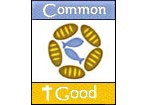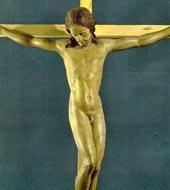Catholic Way |
Print | Back |
SEXUALITY Naked Without Shame: Behind the Fig Leaves The surprising, even shocking idea that the human body, male and female, reveals the mystery of God. Catholic Channel - SilasPartners.com - The human body has had a rather checkered career in Christian history—from St. Francis's "brother ass" to the Puritans' infamous disdain for our bodily-ness and sexuality. It may surprise us, then, that Pope John Paul II has developed an entire "theology of the body," focused precisely on the human body, male and female, as revealer of both the mystery of the Trinity and of the ultimate purpose of human life. Christopher West begins his striking presentation of John Paul's teaching, delivered during the Pope's Wednesday audiences during the first five years of his pontificate. Naked Without Shame is a regularly featured column exploring the meaning of sexuality, life, and the Christian mystery through John Paul’s Theology of the Body. Behind the Fig Leaves is the first in a series of articles devoted to this topic. The Naked Christ Yes, that’s a naked Jesus hanging on the cross. Michelangelo wasn’t much for loincloths. Nor were the Romans in the gruesome spectacle of crucifixion. As the tenth station of the cross commemorates, it was part of Christ’s humiliation that He was stripped of his clothing. Christ endured this humiliation “heedless of its shame” (Hebrews 12:2). In fact, He turned this shame into our glory, winning for us through His own flesh “the redemption of our bodies” (Romans 8:23). As St. Cyril of Jerusalem triumphantly proclaims, Christ “was nailed naked to the cross, and by His very nudity, defeated the principalities and powers, dragging them into His triumphal cortege.” (Mystagogical Catechesis 2:2, emphasis mine). Most people are uneasy beholding Christ naked on the cross. That’s understandable. As our first parents learned, fig leaves are necessary in a fallen world. But many of us have become so detached from our own humanity—from the sacramentality of our bodies—that we find it terribly difficult to face what Christ’s naked body actually reveals about the meaning of life. That’s not only unfortunate. That’s tragic. Behind the Fig Leaves What if I told you that the key to understanding God’s plan for human life is to go behind the fig leaves and behold the human body, naked and without shame? What if I told you that the only way to see the invisible mystery of God is through the vision of the human body in its masculinity and femininity? What if I told you that the Christian mystery itself is simply unintelligible—unless we understand the meaning of sexual difference and our call to sexual union? You’d probably think I was a bit obsessed with sex and naked human bodies. You might even think I’ve been corrupted by our pagan, pornographic culture. Understandable. But what if the Vicar of Christ, Pope John Paul II, were telling you these things? Would you accuse him of the same? More likely, you’d sit up, take notice, and besides wondering what the heck he means, you’d begin reevaluating your own view of the human body and sexuality. Well, sit up and take notice, because this, among other things, is what we learn from John Paul II’s Theology of the Body, a series of 129 general audience addresses he delivered early in his pontificate. “The body, and it alone,” he says, “is capable of making visible what is invisible, the spiritual and divine. It was created to transfer in the visible reality of the world, the invisible mystery hidden in God from time immemorial, and, thus, to be a sign of it” (General Audience, Feb 20, 1980). A mouthful of scholarly verbiage, I know. What does it mean? As physical, bodily creatures, we simply cannot see the mystery of God. He’s pure Spirit. But God stamped the revelation of His own mystery into our humanity—into our bodies—by creating us as male and female in His own image (Gn 1:27). According to John Paul II, there’s nowhere else to go. If we want to see God (this, of course, is the deepest yearning of the human heart, and the ultimate fulfillment of human life), then the body, and it alone, is capable of making God’s invisible mystery visible to us. Incarnational Reality Reality is sacramental, incarnational. This means the human story is a drama of perceiving physical, bodily signs. Signs that reveal a Presence—God with us—or, because of our blindness, fail to do so—God not with us. We will inevitably read the “language” of the body in one way or the other. Yes, the human body—in the mystery of sexual difference and our call to sexual union—possesses a language inscribed by God that proclaims His own eternal mystery and makes that mystery present in our world. Tragically, because of sin, most of us are illiterate when it comes to reading this language. How many of us, for example, think that our sexuality is the last place to look for the presence of God’s mystery? With the way our world so terribly distorts the body, that’s understandable. But John Paul II challenges us to think again. Think again we will. Over the next several months, this column will be devoted to making John Paul II’s sublime and seemingly impenetrable catechesis accessible to the average Jane and Joe. I encourage you to join me on this journey into the mystery of the human body, “naked and without shame.” But I must also warn you: brace yourself. This isn’t just a naked frolic in the Garden of Eden. We’re venturing onto the front lines of the great battle between good and evil, life and death, love and all that is opposed to love. This is revolutionary stuff. This is “rock your world” theology. This is a journey into the heart of the mystery of God, the mystery of the cosmos, and the mystery of our humanity. All by pondering the body? Yup. To be continued … Copyright © 2000 Christopher West |
|
|
|

